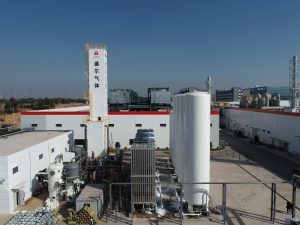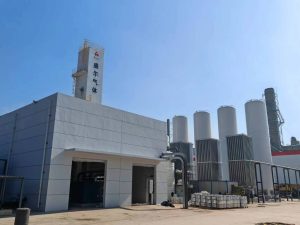Cryogenic air separation units (ASUs) are used to make high-purity oxygen, nitrogen, and argon for fields like steelmaking, petrochemicals, and power. At its core, the process is simple: compress air, cool it down, then let different components separate by their boiling points. But in real-world plants, making that process work reliably at scale takes more than just cooling and distillation. One step that truly matters — though not often noticed outside engineering circles — is air purification. This step removes moisture, CO₂, and trace hydrocarbons before the air ever gets to the cryogenic stage, protecting equipment and anchoring the system’s long-term stability.(cryogenic air separation)
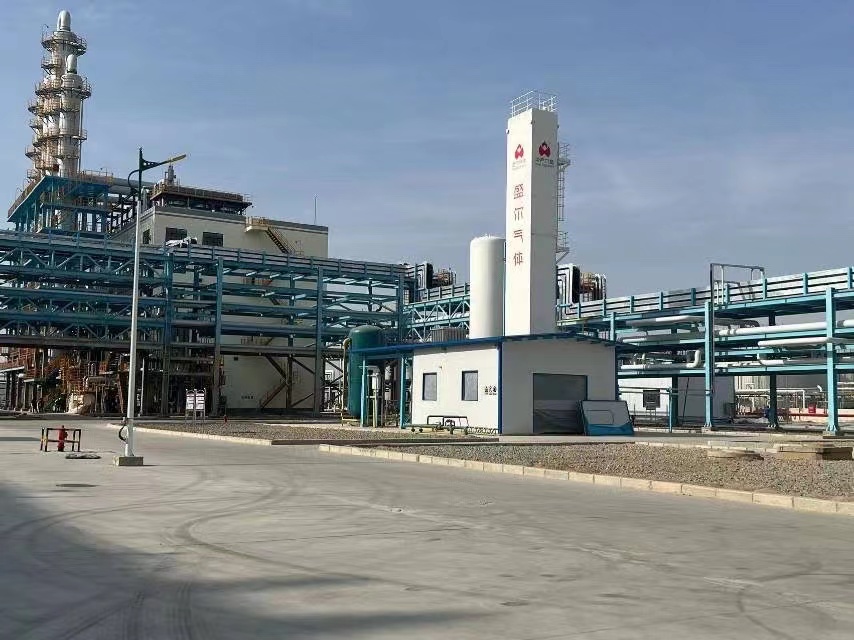
1. The Composition of Air and the Challenge of Impurities
Atmospheric air contains roughly 78% nitrogen and 21% oxygen, along with small amounts of argon, carbon dioxide (CO₂), water vapor, and trace hydrocarbons. For cryogenic air separation, moisture and CO₂ are the main impurities that must be removed. As the temperature falls below about −150 °C, they solidify — forming frost and dry ice that can block the narrow passages inside the heat exchangers and upset temperature control in the cold box. Even very small concentrations, only a few parts per million, can start to freeze and gradually build up, reducing heat-transfer efficiency and increasing pressure drop until operation becomes unstable. To avoid these problems, the feed air is purified before entering the cryogenic section so that moisture and CO₂ are removed, keeping the system clean, efficient, and safe during long-term operation. (cryogenic air separation)
2. Purpose and Principle of the Purification System
The purification system removes moisture and carbon dioxide from the air stream before it enters the main heat exchanger and the distillation columns. It operates on the principle of adsorption, using vessels packed with molecular sieves composed of zeolite and activated alumina to retain these impurities and prevent frost formation in downstream equipment.(cryogenic air separation)
After compression, the process air passes through an aftercooler and a pre-filter to remove oil, condensed moisture, and fine particulates before entering the twin-tower molecular sieve unit. In operation, one bed adsorbs water vapor and carbon dioxide under pressure, while the other is regenerated by a stream of heated, dry purge air. The two beds operate alternately on a fixed time cycle, ensuring a continuous flow of clean, dry, and CO₂-free air to the cold box.(cryogenic air separation)
This cyclic process ensures:
- Outlet dew point ≤ −60 °C
- CO₂ concentration ≤ 1 ppm
- Stable, dry, contaminant-free air supply to the cold box
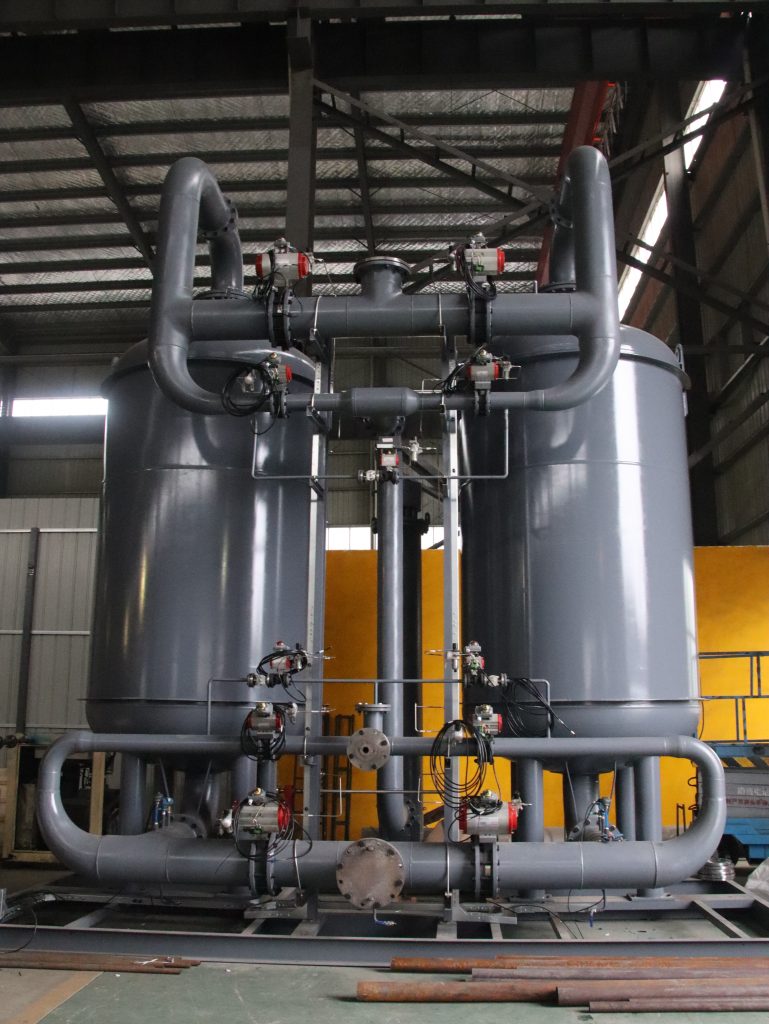
3. Typical Configuration of a Purification Unit
Modern ASUs adopt a dual-bed regenerative purification system consisting of:
- Adsorption vessels: filled with activated alumina (for water removal) and molecular sieves (for CO₂ removal)
- Switching valves: to alternate airflow between adsorption and regeneration
- Electric or steam heaters: to elevate purge gas temperature during regeneration
- PLC control system: to sequence timing, monitor temperatures, and record operation cycles
In large plants, the system is often skid-mounted and designed for minimal pressure drop and easy maintenance. Some advanced ASUs integrate pre-cooling units or hydrocarbon traps, improving both efficiency and safety.(cryogenic air separation)
4. Consequences of Inadequate Purification
If air purification is incomplete, residual CO₂ or moisture will freeze when entering the cold box. The frost and dry-ice buildup narrows flow passages and disturbs heat-transfer profiles within the main exchanger. As the pressure drop increases, expanders and distillation columns drift away from their design conditions, causing mechanical stress and unstable operation.
If ice or solid CO₂ begins to form inside the cold box and the condition is not corrected promptly, flow passages within the main heat exchanger can become restricted. As the pressure drop increases, heat-transfer efficiency declines and the distillation columns gradually lose thermal balance. At that stage, operators must shut down the unit to allow controlled warming and removal of frozen deposits. This unplanned shutdown not only consumes the stored refrigeration energy but also disturbs column equilibrium, extending recovery time and delaying product delivery. In continuous-production facilities, a single icing event can result in significant energy penalties and measurable financial losses.
5. Regeneration and Maintenance
Molecular sieves lose adsorption capacity over time due to dust fouling or incomplete regeneration. Regular monitoring of outlet dew point and CO₂ concentration is critical to detect early deterioration. Typical maintenance includes:
- Verifying regeneration temperature (usually 150–250 °C)
- Checking valve sealing and switching sequences
- Replacing or reactivating sieve materials every 2–3 years depending on air quality
Modern ASUs incorporate remote PLC supervision, allowing operators to track real-time adsorption and regeneration status. Some systems even use energy-optimized regeneration that reduces purge-gas consumption by 10–20%.
6. Integration with the Cryogenic Process
After leaving the purification unit, the process air enters the main heat exchanger, where it is progressively cooled to a few degrees above its liquefaction temperature before entering the high-pressure column. The upstream removal of moisture and carbon dioxide prevents solid deposition within the exchanger’s cold passages, allowing a narrow temperature approach between the process and return streams. Maintaining this small temperature differential is essential for effective thermal coupling between the exchanger and the distillation columns, ensuring stable phase behavior in the cold box and minimizing overall power consumption of the ASU.
In essence, the purification unit safeguards:
- Heat-exchanger efficiency
- Cold-box cleanliness
- Distillation stability
- Long-term reliability of compressors and expanders
Without it, the entire ASU would be vulnerable to unpredictable shutdowns and performance degradation.
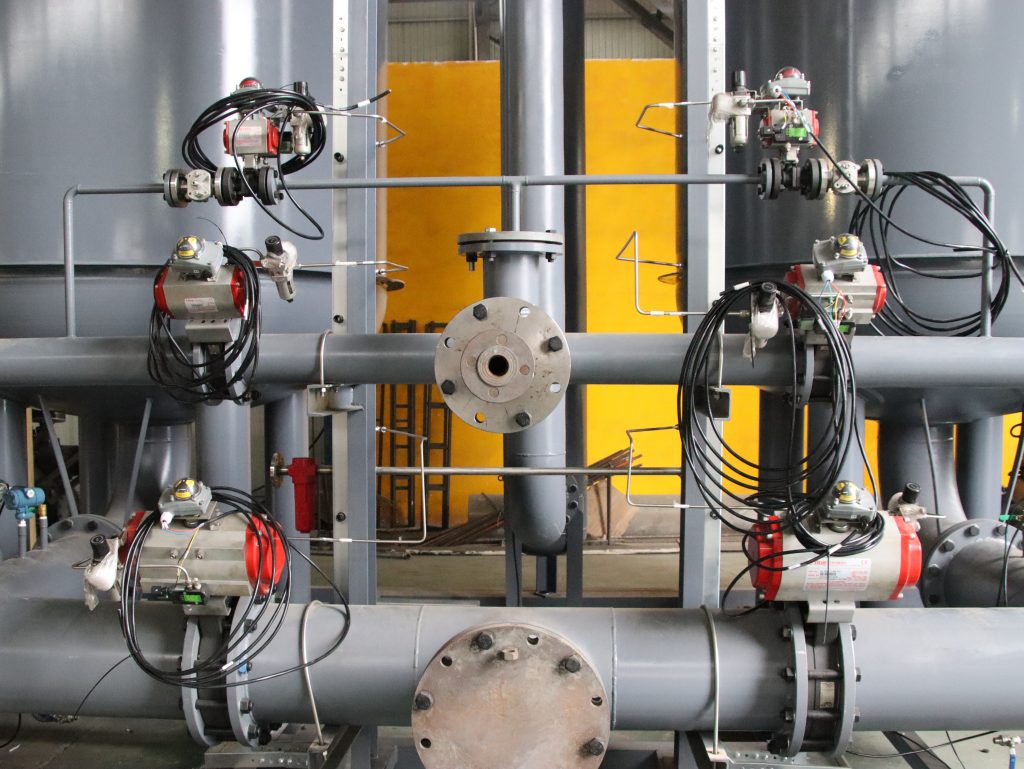
7. The Molecular Sieve: Core of the Purification Process
The molecular sieve, generally made from zeolite 13X or NaX, consists of a rigid aluminosilicate framework containing a system of precisely sized micropores. This structure provides a very high internal surface area and strong selectivity for polar molecules such as water vapor and carbon dioxide. As the compressed air flows through the bed, these contaminants are captured within the pore structure by physical adsorption, while the main components—nitrogen and oxygen—pass through with minimal resistance. During regeneration, heated dry purge air flows through the vessel, desorbing the adsorbed gases and returning the sieve to normal operating condition.(Cryogenic air separation)
Key advantages include:
- High adsorption selectivity
- Thermal and mechanical stability
- Reusability through repeated cycles
- Compact system footprint
These properties make molecular sieves ideal for the stringent requirements of cryogenic ASUs.
8. Technological Development Trends
With increasing demand for energy efficiency, modern purification units focus on:
- Lower pressure drop designs through optimized vessel geometry
- Smart valve sequencing for reduced switching losses
- Hybrid adsorption–chilling systems combining pre-cooling and purification
- Advanced adsorbents (e.g., LiX, CaA, or composite zeolites) offering higher capacity and faster regeneration
In digitalized plants, predictive control algorithms monitor adsorption saturation and automatically adjust regeneration timing to extend sieve life.
9. Conclusion
In a cryogenic air separation plant, purification serves as the operational bridge between the compression train and the cold box. By removing moisture, carbon dioxide, and trace hydrocarbons from the feed air, the purification unit prevents frost formation in the heat exchangers and preserves the temperature approach necessary for stable cryogenic performance. Beyond contamination control, the purifier stabilizes the plant’s thermal balance and protects downstream equipment from transient load changes that occur during startup, regeneration, or product demand shifts. Its design—typically employing twin beds of zeolitic molecular sieves—enables continuous operation through automatic tower switching and controlled thermal regeneration. For process engineers, optimizing adsorption efficiency, purge conditions, and cycle timing is fundamental to maintaining low specific power consumption and consistent oxygen and nitrogen purity over extended operation.
Keywords: cryogenic air separation, purification unit, molecular sieve, CO₂ removal, moisture removal, air separation unit (ASU), oxygen and nitrogen production, cryogenic distillation

